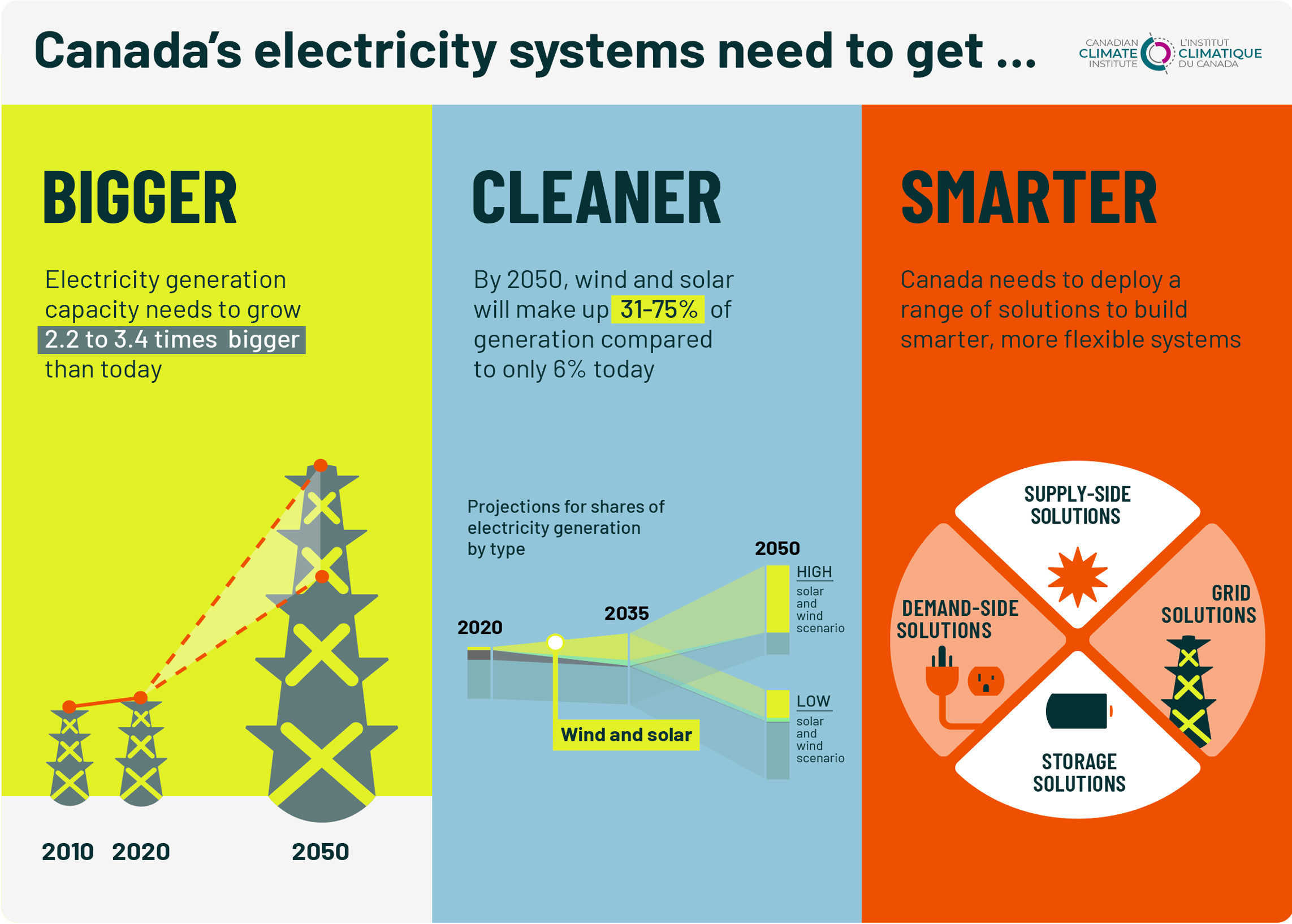Why Electricity Demand Is Surging in Canada
Canada is in the middle of a once-in-a-century electrical transformation. As the country pushes toward net-zero emissions by 2050, households and businesses are switching from fossil fuels to electricity. Heating systems, vehicles, and even industrial equipment that once ran on gas or oil are increasingly going electric.
According to the Canadian Climate Institute, demand for electricity could grow 1.6 to 2.1 times by 2050. That’s a dramatic shift — and it’s not just about clean energy goals. Other drivers of electrical load growth include:
- Electric Vehicles (EVs): Adoption rates are climbing fast. By 2035, all new light-duty cars and trucks sold in Canada must be zero-emission.
- Heat Pumps & Electric Heating: Many provinces are incentivizing homeowners to replace oil or gas furnaces with electric heat pumps.
- Smart Homes & Digital Lifestyles: Remote work, data centers, and automation all add to electricity consumption.
- Population Growth & Urbanization: More people, more homes, more electrical demand.
The result? The electrical grid, and the wiring inside our homes and businesses faces a level of stress it was never originally designed for. For property owners, that means more electrical upgrades, smart systems, and sometimes, emergency calls when systems can’t keep up.
What Electrical Load Growth Looks Like in Everyday Life
Most homeowners and business owners don’t notice this shift until it causes a problem. Here are common scenarios we’re already seeing across Canada:
- Tripped Breakers When Charging EVs: A 40-amp Level 2 charger can overload an older 100-amp panel.
- Overheating Panels or Wiring: Adding heat pumps, hot tubs, or high-draw appliances strains outdated systems.
- Voltage Fluctuations: Sensitive electronics fail or reset due to unstable supply.
- Delayed Renovations or Retrofits: Inspectors often require electrical panel upgrades before approving projects.
In short, as Canada electrifies, outdated electrical infrastructure is hitting its limits. And when that happens, you may find yourself calling a 24/7 emergency electrician.
Smart Load Management: Bridging the Gap
The good news? Technology is evolving to help manage rising demand without always requiring a full electrical overhaul.
Key Solutions for Load Growth:
- Smart Electrical Panels – Monitor usage in real time, shed non-critical loads, and prevent overloads.
- Dynamic Load Controllers – Manage EV chargers, water heaters, and other heavy appliances based on panel capacity.
- Energy Storage Systems (Batteries) – Smooth out spikes, provide backup during outages, and cut grid reliance during peak hours.
- Utility Demand Response Programs – Incentives for reducing usage during peak demand.
These solutions won’t always replace the need for rewiring, but they can reduce costs, increase safety, and extend the lifespan of existing systems.
What Canadian Electricians (and Customers) Need to Know
For Canadian property owners, the electrification wave brings both opportunity and responsibility. Here are three important takeaways:
- Panel Upgrades Are Becoming Standard
Upgrading from 100 amps to 200 amps is now common. For homes with EVs and heat pumps, even 200 amps can be tight. - Planning Ahead Saves Money
Installing an EV charger today? Upgrade your panel at the same time to avoid higher costs later. - Emergency Electrical Situations Are Changing
Overloaded systems lead to melted breakers, overheating wires, or outages that affect critical devices. More calls to emergency electricians in Canada are now caused by load growth stresses.
The Canadian Electrical Code & Safety Standards
- Canadian Electrical Code (CEC, 2024 Edition): Expanded sections on renewable energy, storage, and load management.
- Utility Requirements: Hydro utilities now require service entrance upgrades for many EV charger installations.
- Safety Standards: CSA Z462 (arc flash safety) and CAN/ULC S801 (utility safety) continue to evolve with higher-demand environments.
Staying compliant with the latest electrical codes is not just a legal requirement. It’s critical for protecting property and lives.
How Property Owners Can Stay Ahead of Electrical Demand
If you’re a homeowner, business owner, or property manager in Canada, here are practical steps you can take today:
- Schedule a Load Calculation – Licensed electricians can evaluate your panel capacity vs. future demand.
- Invest in Smart Monitoring – Real-time data helps prevent overloads.
- Upgrade Proactively – Don’t wait until breakers trip or systems fail.
- Build Backup & Resilience – Consider generators or batteries for peace of mind during outages.
- Keep a 24/7 Emergency Electrician on Call – When the unexpected happens, fast response is essential.
Final Word: Why Load Growth Matters to Everyone
This change it’s reshaping how Canadians power their lives. From electric vehicles to smart homes to clean heating systems, our dependence on electricity is growing every year.
This future promises cleaner air, lower emissions, and smarter technology. But it also requires modernized electrical systems, proactive upgrades, and trusted emergency electricians to keep homes and businesses safe.
At the end of the day, electrification is the future of Canada — but safety, reliability, and readiness must come first.
